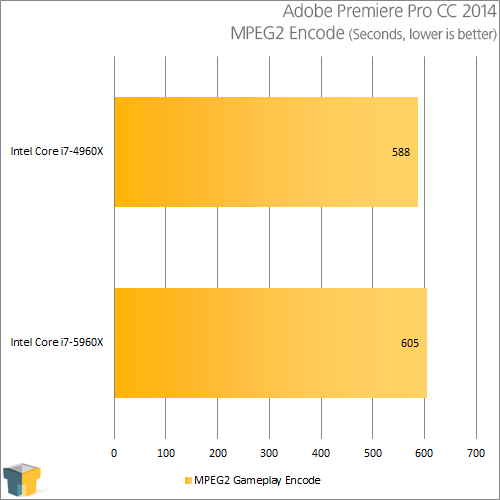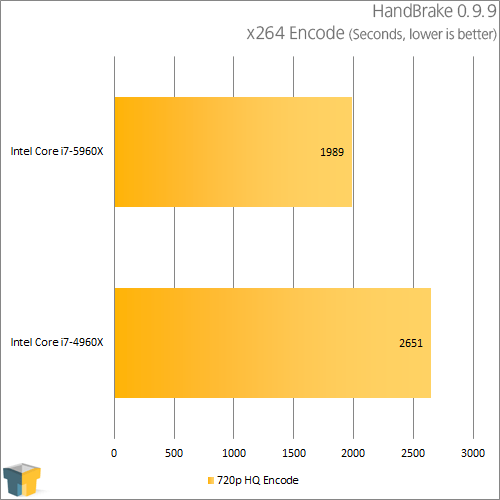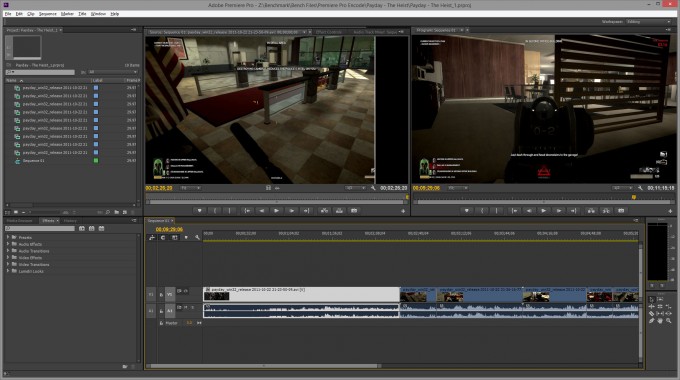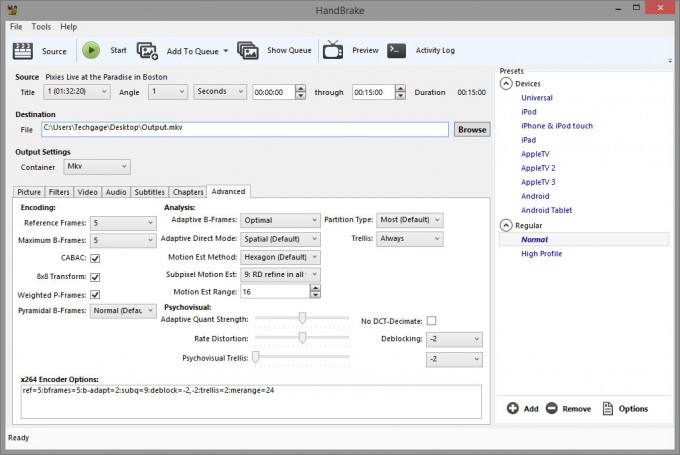- Qualcomm Launches Snapdragon 4 Gen 2 Mobile Platform
- AMD Launches Ryzen PRO 7000 Series Mobile & Desktop Platform
- Intel Launches Sleek Single-Slot Arc Pro A60 Workstation Graphics Card
- NVIDIA Announces Latest Ada Lovelace Additions: GeForce RTX 4060 Ti & RTX 4060
- Maxon Redshift With AMD Radeon GPU Rendering Support Now Available
Core i7-5960X Extreme Edition Review: Intel’s Overdue Desktop 8-Core Is Here

In late 2011, I wagered that Intel would follow-up its i7-3960X with an eight-core model within the year. That didn’t happen. Instead, we have had to wait nearly three years since that release to finally see an eight-core Intel desktop chip become a reality. Now for the big question: Was the company’s Core i7-5960X worth the wait?
Page 5 – Multi-Media: Adobe Premiere Pro & HandBrake
With our 3D modeling and rendering tests out of the way, let’s dive right into another popular use for high-end machines: video editing and encoding. Scenarios here could include encoding a large movie into a mobile format, ripping a Blu-ray to your PC and encoding it for HTPC use, or encoding a family video you painstakingly edited.
Adobe’s Premiere Pro likely needs no introduction. It’s a tool used by the amateur and professional video content creator alike due to the extreme control it provides along with all of the important codecs, presets, filters and tweaking options. Premiere Pro can be used for any sort of video, be it real-life, animated, 3D or even game footage.
For our benchmarking, we encode a project that consists of 35GB worth of game footage from Payday: The Heist, which we encode to MPEG2 Blu-ray 1080p/30. The resulting video can be seen here.

Intel told us that we should expect up to a 20% gain in performance in Premiere Pro, although 4K video was specifically mentioned. It seems our test isn’t quite hardcore enough, as the i7-5960X’s decrease in clock speed reflected itself here. Due to time constraints, I was unable to test using the “Maximum Quality Render” setting, but I’m betting some gains would be seen there. However, that’s not a setting that most people will use.
HandBrake 0.9.9
Premiere Pro is meant to be used as a professional tool for editing and encoding, while HandBrake acts strictly as an encoder, able to take one video format and encode it to another according to your specifications. While there are many presets available from the get-go, you’re able to customize whatever’s available, or create your own. It’s a simple tool with complex capabilities.
Here, we have a project that makes use of a Blu-ray rip of Pixies: Live at the Paradise in Boston. With it, we encode the first 15 minutes of the concert to an archival-quality 1080p MKV. The archival-quality encode is time-consuming, but it can take full advantage of a high-end processor. For those interested, our H.264 options are:
ref=5:bframes=5:b-adapt=2:subq=9:deblock=-2,-2:trellis=2:merange=24

On the last page, we saw Intel’s eight-core i7-5960X perform 33% better in Cinebench, and 35% better in POV-Ray. Being that those are synthetic benchmarks, it’s not that hard to believe such gains. Here, we see performance very close to that hit: The Core i7-5960X encoded our video 25% faster than the i7-4960X. Just imagine if the i7-5960X was clocked the same as the i7-4960X! Intel claimed to us that HandBrake should see about a 33% gain, but as the Premiere Pro test above proved, the company’s tests differ a bit from ours.
Support our efforts! With ad revenue at an all-time low for written websites, we're relying more than ever on reader support to help us continue putting so much effort into this type of content. You can support us by becoming a Patron, or by using our Amazon shopping affiliate links listed through our articles. Thanks for your support!







